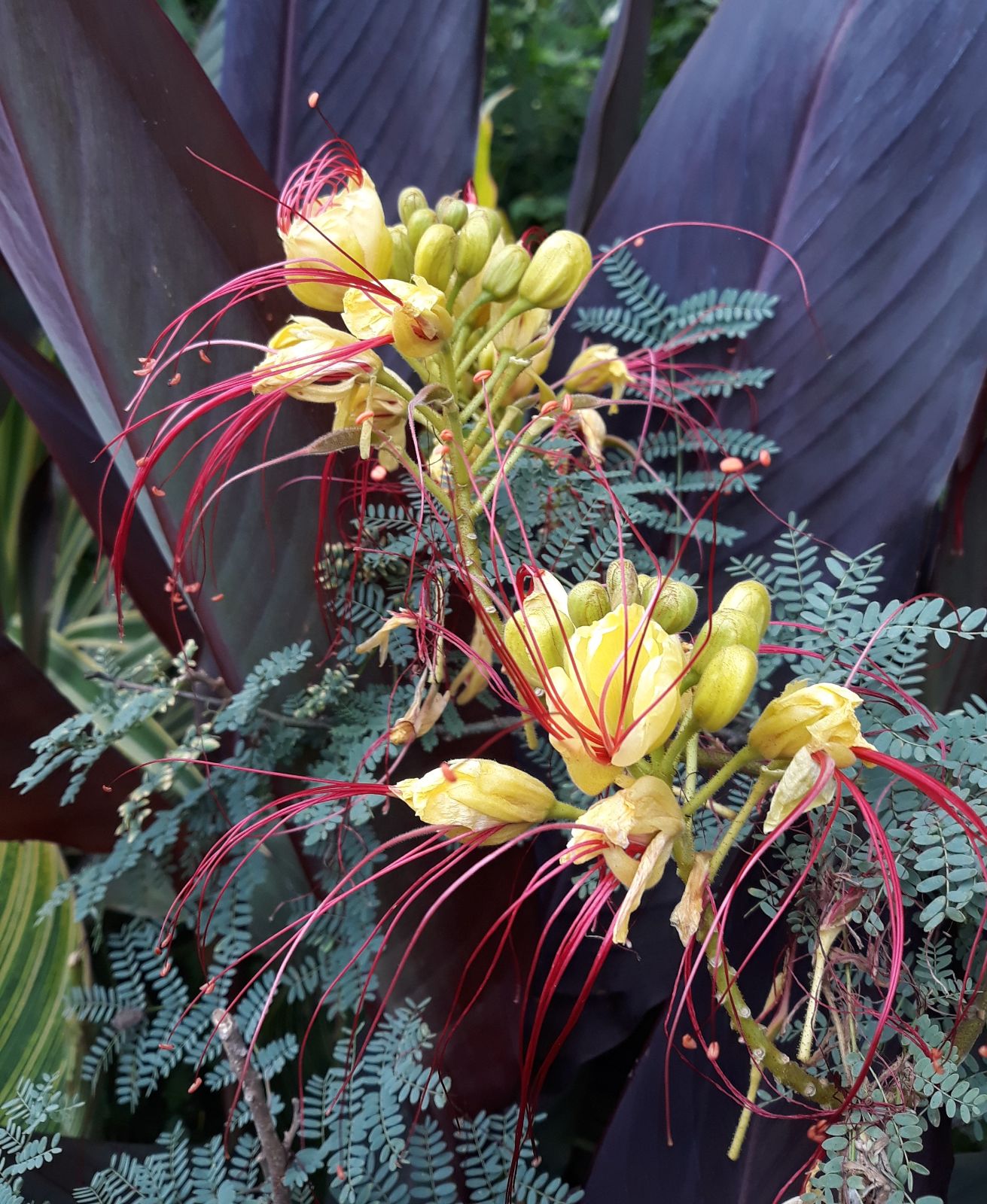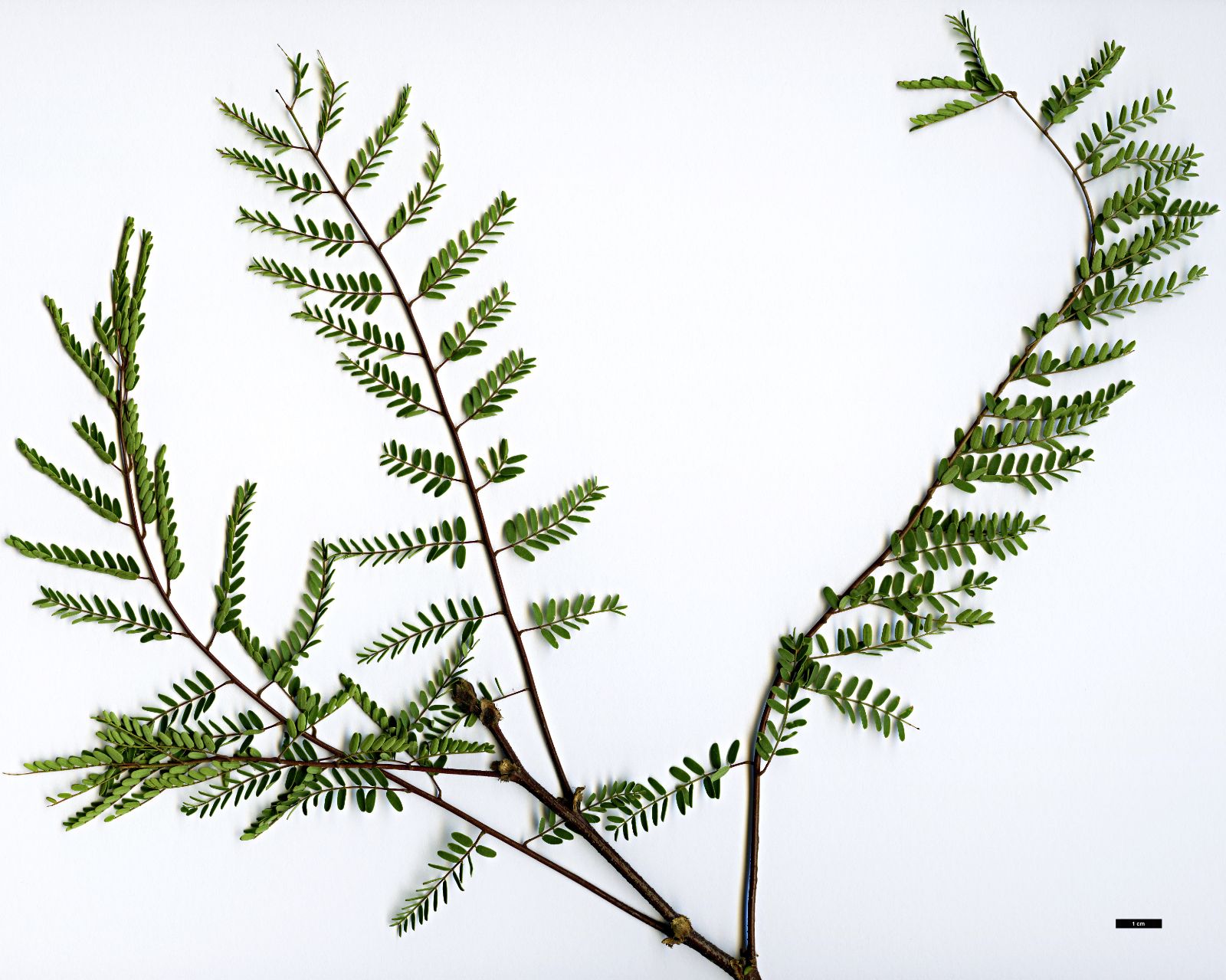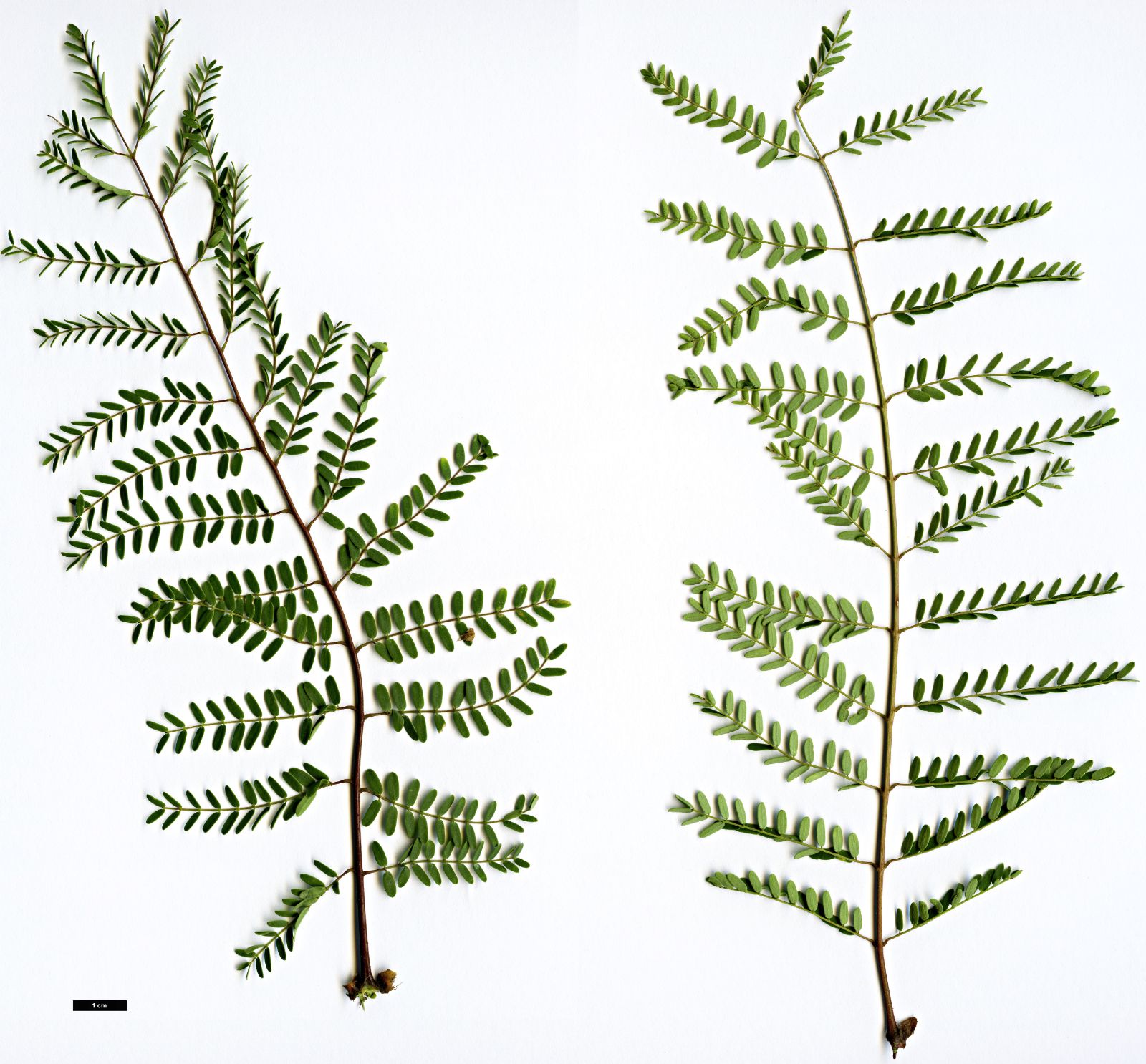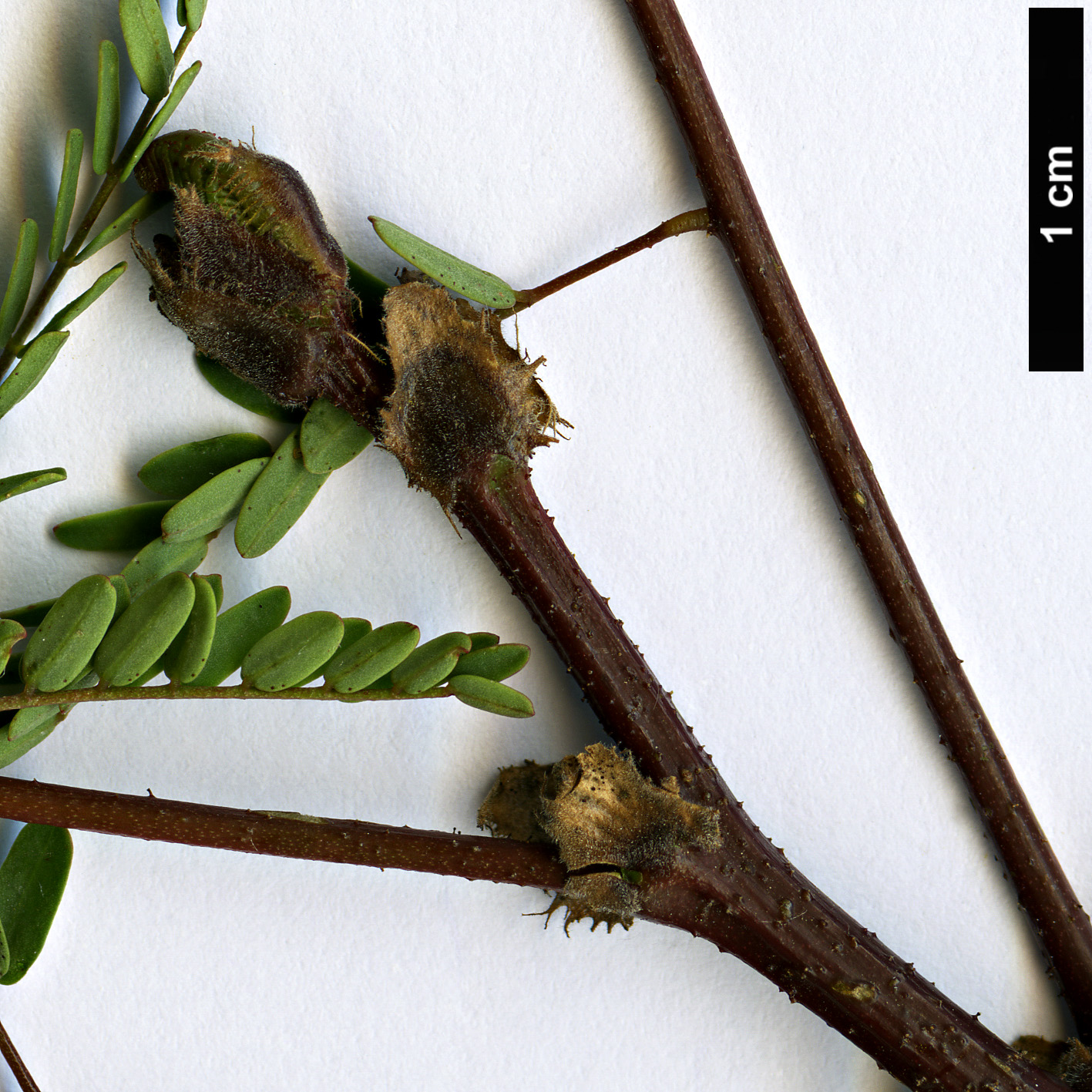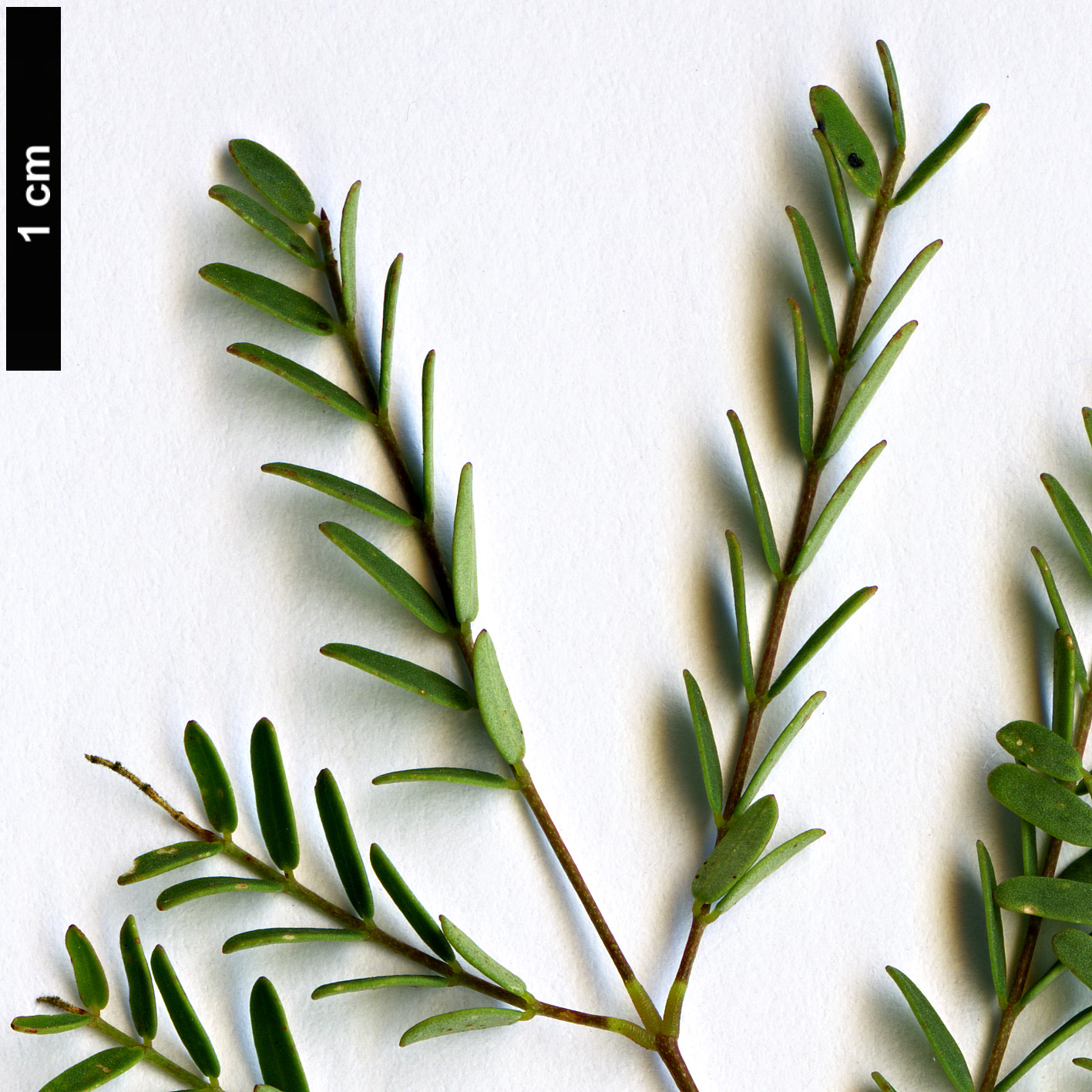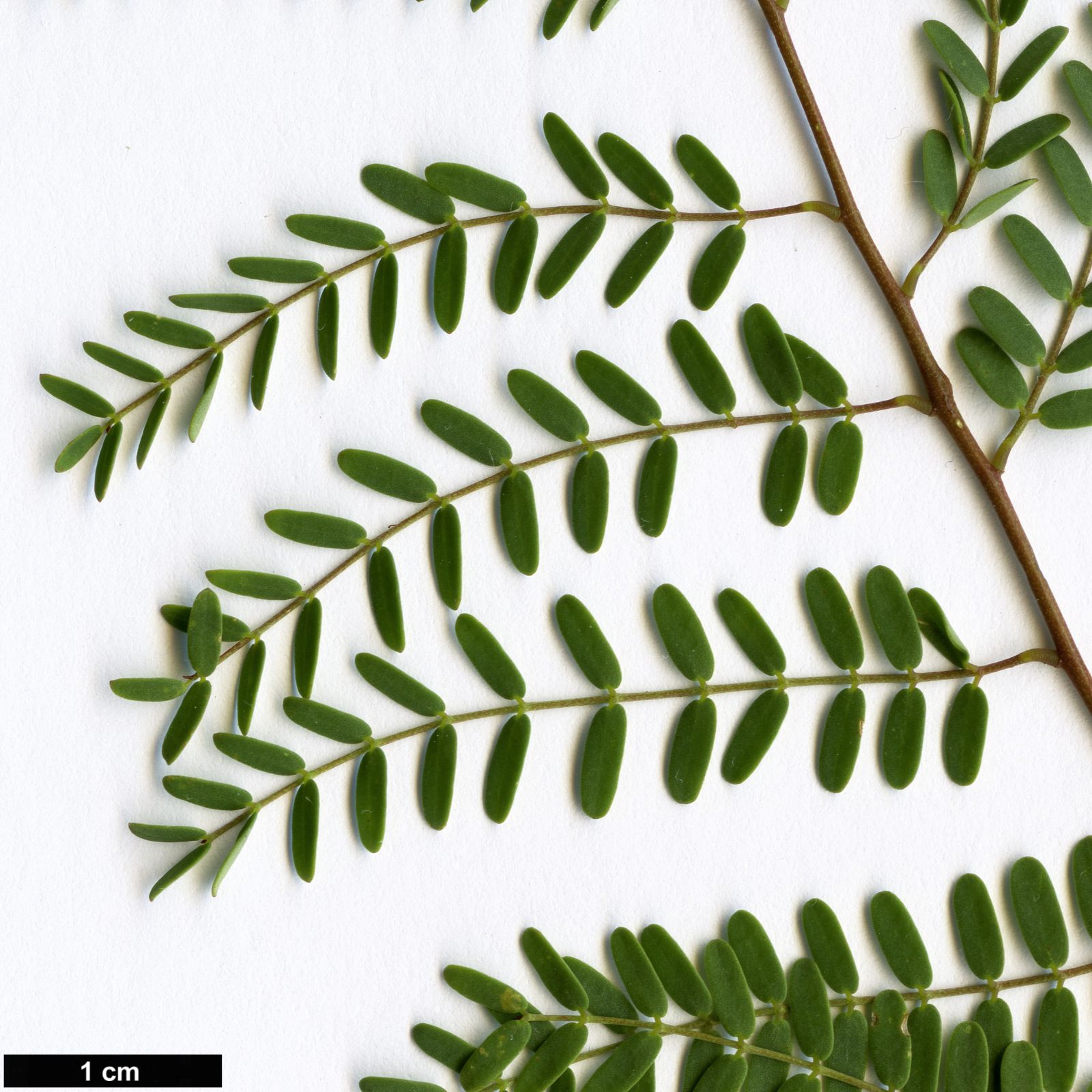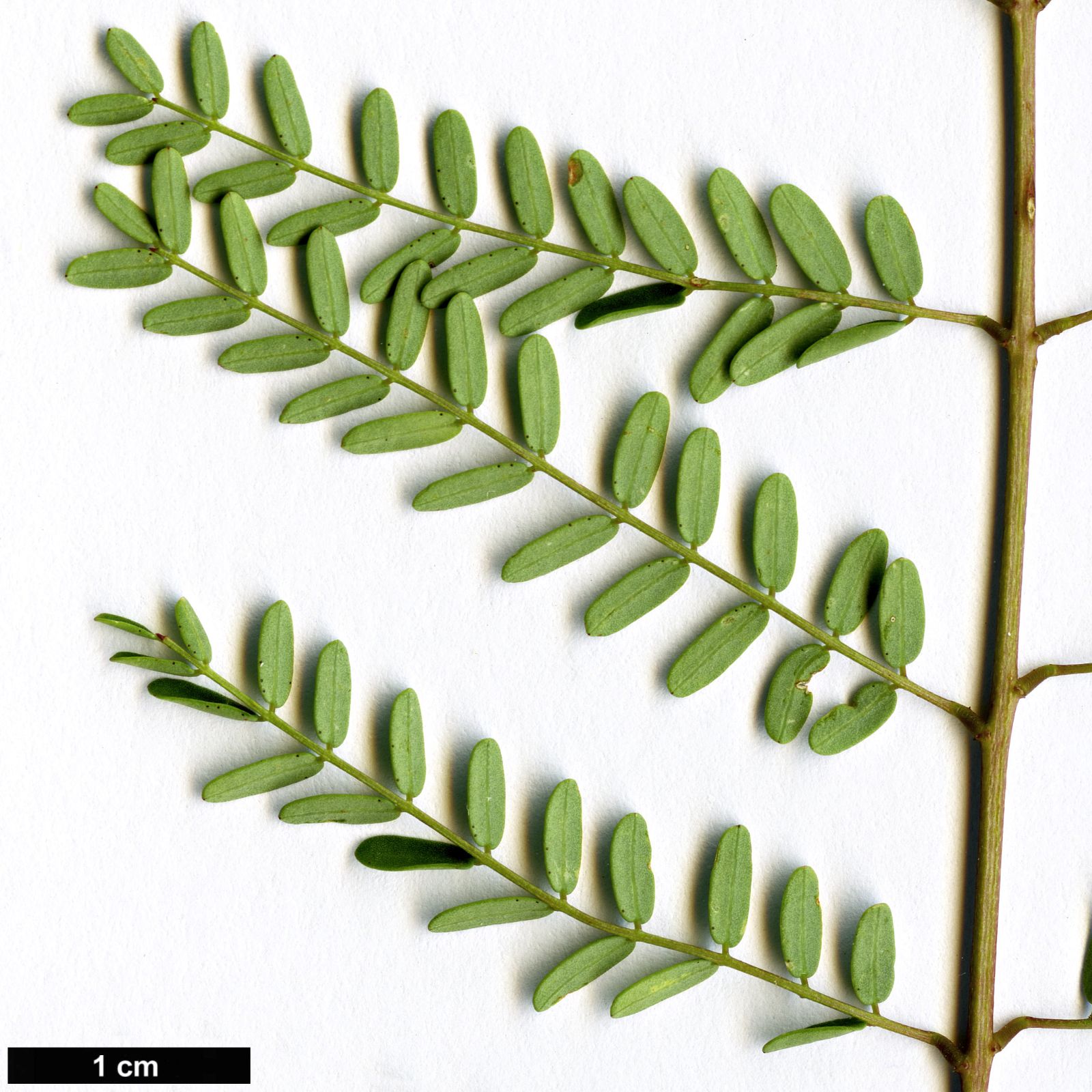Caesalpinia gilliesii
Credits
Article from Bean's Trees and Shrubs Hardy in the British Isles
Recommended citation
'Caesalpinia gilliesii' from the website Trees and Shrubs Online (treesandshrubsonline.
Genus
Synonyms
- Poinciana gilliesii Hook.
A deciduous shrub or small tree, with slender erect branches; young shoots covered with gland-tipped hairs. Leaves doubly pinnate, about 8 in. long, composed of about nine to eleven pairs of primary divisions 11⁄2 in. long, each of which carries numerous small, glabrous, oblong leaflets, about 1⁄4 in. long and 1⁄12 in. wide. Racemes terminal, stiffly erect, 1 ft or more long, carrying from thirty to forty flowers. Each flower is borne on a downy stalk, 1 in. or more long, the petals rich yellow, 11⁄4 in. long, forming a rather saucer-shaped corolla. Sepals 3⁄4 in. long; stamens scarlet, 21⁄2 to 3 in. long; pod 3 in. long, 5⁄8 in. wide. Bot. Mag., t. 4006.
Native of the Argentine Republic, especially in the province of Mendoza; introduced in 1829, but too tender to have become generally cultivated. It succeeds quite well on a south wall at Kew, where it has grown 25 ft high, and flowered nearly every year in July and August. The plant now in the collection grows against a wall of the Temperate House. It has no chance at Kew in the open ground, but in a garden at Ryde, Isle of Wight, it succeeded admirably. The rich yellow flowers with long scarlet stamens give a singularly brilliant effect.

